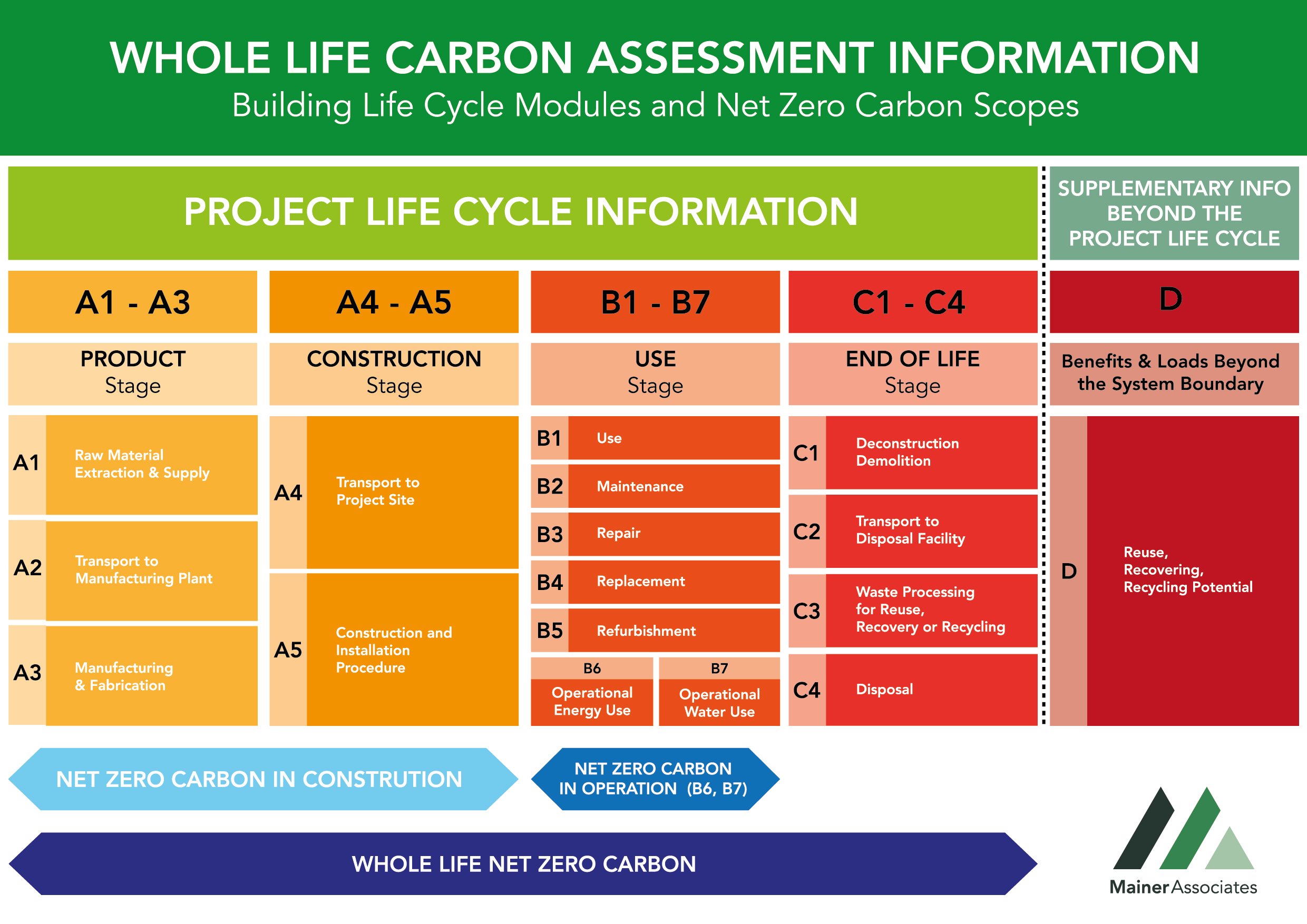Whole Life Cycle Assessment: Creating the Building of Lifetime
Written by
Paul Malone - Marketing Manager
To contact please email: paul.malone@mainer.co.uk
The World Green Building Council’s has set out it’s ambitious ‘Whole Life Carbon Vison’ mission to reduce embodied emissions by 40% by 2030, and to achieve net zero embodied carbon and operational carbon in all buildings by 2050.
Whole Life Cycle Assessment will be integral to hitting these targets, so lets look at how the process works
What is Whole Life Cycle Assessment (WLCA)?
Building Services Research and Information Association (BSRIA) defines WLCA as
"a method of project economic evaluation in which all costs arising, and benefits accrued from installing, owning, operating, maintaining, and ultimately disposing of a project are considered to be potentially important to that decision”
WLCA considers Four stages in the life of a project, which are known as life-cycle modules, and which must be presented discretely, based on a period of 60 years:
1. Product sourcing and construction
How can you reduce carbon emissions reduction at all stages?
2. Use
How will the building perform, to minimise future emissions?
3. End of life:
How will you capture the emissions from deconstruction and demolition, transport, waste processing for reuse, recovery or recycling and disposal, until the site is cleared.
4. Benefits and loads beyond the system boundary:
What will happen to a building after it has been demolished or dismantled in order to facilitate future reuse, recycling or recovery?
This and the previous module together form the circular economy module
For a larger version of this table please click here
What are Whole Life Cycle emissions?
Around 40% of all greenhouse gas emissions come from buildings, and it’s estimated that embodied emissions account for around one-quarter of all emissions a building will emit during its lifetime.
They are the carbon emissions that result from the combination of the materials, construction and use of a building throughout its life and afterlife, effectively, as demolition and disposal form part of the cycle.
WLCA considers operational (both regulated and unregulated) and embodied emissions in tandem over a project’s life cycle, and determines the best opportunities to reduce lifetime emissions.
Net Zero Operational Carbon versus Net Zero Embodied Carbon
Each term is defined in the table below:
Why do we need both approaches to reduce Carbon?
This dual approach, which pays attention to the carbon intensity of the structure itself as well as to reducing its operational energy, is part of the relatively recent move away from simply focusing on operational emissions alone. The RICS guidance uses the following example to illustrate the potential pitfalls of focussing solely on the operational side:
“The embodied carbon burden of installing triple glazing rather than double can be greater than the operational benefit resulting from the additional pane.”
The integration of these two elements needs to be understood as part of the sustainability agenda and the imperative of working towards a low carbon future.
When should you start using WLCA?
Whole Life Cycle Assessments are required at three stages:
● Pre-application;
● Stage 1 submission (RIBA stage 2/3) and
● Post-construction (RIBA stage 6).
Tackling embodied carbon is critical at the design stage. While operational emissions challenges can be addressed and mitigated throughout a building’s life cycle, there’s only one chance to reduce embodied emissions: at the design stage.
Therefore It helps designers not only consider the carbon impact of a structure at the architectural and operational level but across the building’s entire lifespan, including construction.
Taking a WLCA approach ensures early design stage decisions align with your projects net zero goals
How can we help?
Mainer Associates offers carbon consultant services to deliver LCA and Whole-Life carbon quantification.
We can complete LCA to RICS & BREEAM scope for clients pursuing net zero carbon status, BREEAM certification, along with any bespoke assessment a client sets us.
For more help please visit our website here for more information or please contact one of our team here
Please click below for more information on Mainers Services:














